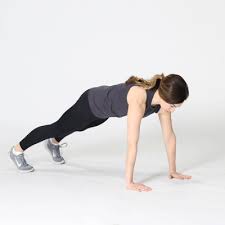In order for your arm and shoulder to optimally function, muscles throughout your entire body must contribute. During most dynamic activities in everyday life and sports, the lower body creates most of the needed energy. Energy is transferred from your lower body up through your trunk and finally to your arm. The important links in this sequence are the core and shoulder blade muscles.
Shoulder strengthening exercises that focus on the rotator cuff are only partially effective for many patients with shoulder pain. Muscles do not function in isolation. Your brain programs movement as patterns, not individual muscles. Therefore, shoulder rehabilitation programs should include exercises that integrate your entire kinetic chain including your core and shoulder blade.
These same rehabilitation exercises can also be utilized in a dynamic warm-up for athletes. Ideally, muscles throughout the body are involved in the pre-game warm-up for baseball and other overhead sports such as tennis and swimming. These exercises have the potential to improve strength, and performance and reduce your risk of injury.
Closed kinetic chain exercises involve bearing weight through your arms and hands. The 5 closed kinetic chain exercises included in this article activate your core muscles along with your trapezius and serratus anterior.
Quadruped Band Series
Begin in the quadruped position with your hands under your shoulders and knees under your hips. Maintain a neutral spine and pelvis. Loop a resistance band around your wrists. Next, reach 6-8 inches to the side with one arm. Place your hand down on the floor for 2 seconds before returning to the start position.
Do 8 repetitions on one side then repeat on the opposite side. This exercise activates your serratus anterior muscle. To keep these muscles highly activated, push your upper back up toward the ceiling throughout the exercise.
High Plank on Balance Board
This exercise is performed in a push-up position with your hands on a balance board or BOSU. Position your hands below your shoulders with your pelvis in a neutral position. From this position, move the board in a circular fashion by touching the edges of the board to the floor.
Perform 30 seconds in one direction. After a brief rest period, repeat the same sequence moving the board in the opposite direction. This exercise activates your serratus anterior muscle.
Shoulder Taps
Begin in a push-up position with your hands under your shoulders. Maintain a neutral spine and pelvis. Perform the exercise by alternately touching your opposite shoulder with the opposing hands while maintaining a pelvic neutral plank position.
Perform 8 to 10 slow touches to each shoulder. This exercise highly activates your serratus anterior muscle and to a lesser degree your lower trapezius. To keep the serratus anterior highly activated, push the upper back up toward the ceiling throughout the exercise.
Ball Walkouts
Begin by lying over an exercise ball with both hands on the floor. Walk your hands and body out from the ball. Maintain a neutral spine and pelvis as you walk out from the ball. Pause and hold the end position for 10 seconds. Then walk back to the starting position. Perform 8 repetitions in a slow and controlled fashion.
Bear Crawls
Assume an all-4 position with your hands shoulder-width apart and knees under your hips. Elevate your knees from the floor so you are stabilized by 4 points of contact. Begin by pushing your back up towards the sky to protract your scapula and activate your serratus anterior.
Crawl forward starting with your right hand and your left foot followed by the left hand and the right foot. After each step, pause briefly to exhale. Take four steps or more depending on space, then turn around and bear crawl back. To increase the challenge, crawl in both a forward and backward direction.
Final Thoughts About Closed-Chain Exercises
The 5 exercises shown in this article integrate your lower body, core, and upper body. More specifically, these exercises challenge your rotator cuff and scapular muscles while simultaneously activating your core. This is similar to how your body functions in sports and everyday life. Integrate closed-chain exercises into a warm-up or as part of a stand-alone exercise program.
If you have questions, contact your physical therapist to develop the right program for your goals. The doctors of physical therapy at BSR have been helping people in Southern Ocean County move without pain since 2007.


